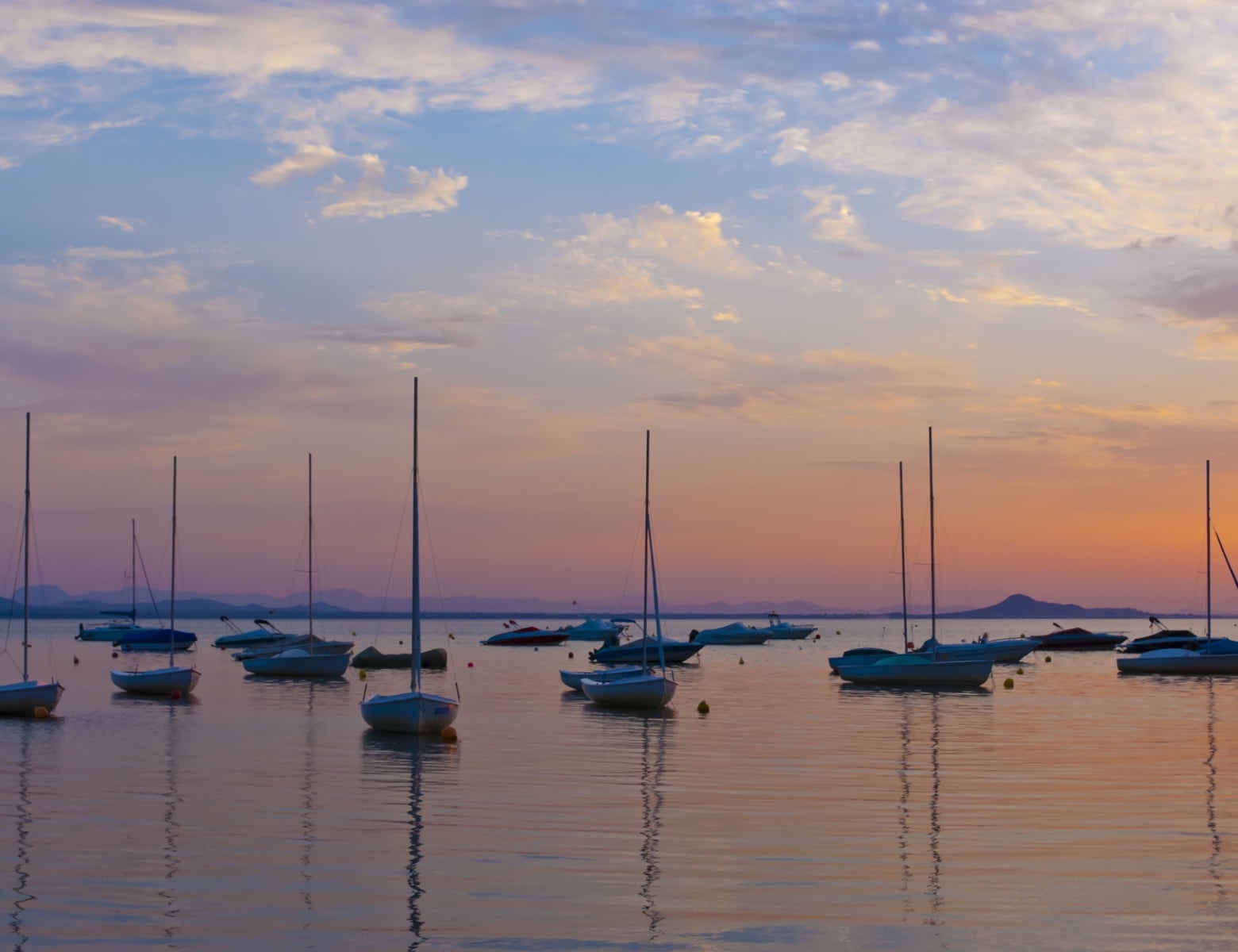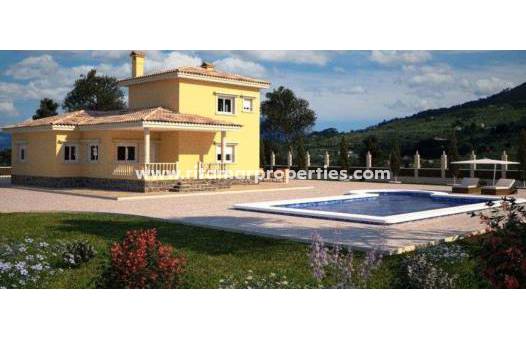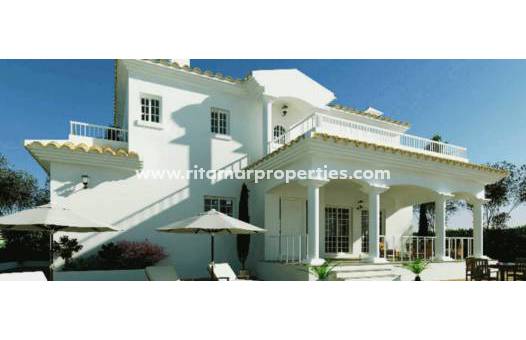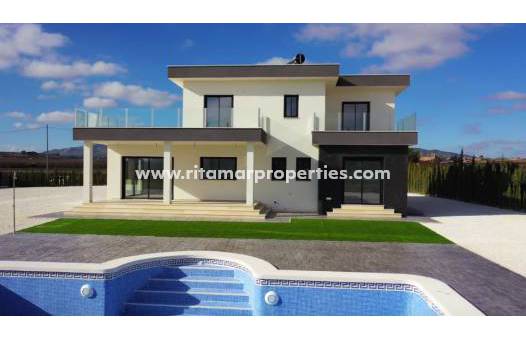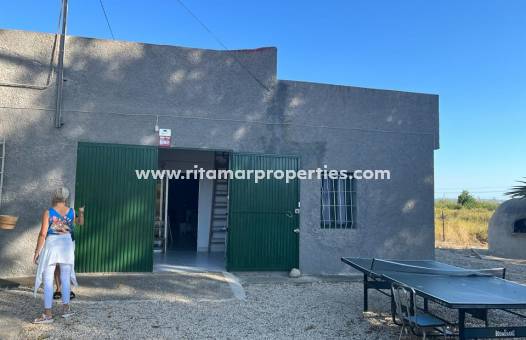Costa Calida
The Costa Cálida (Spanish for warm coast) is located south of the Costa Blanca and north of the Costa de Almeria in the Murcia region. The most important city in this region is Cartagena, which also has one of the most important ports in the country. The warm coast of Spain...
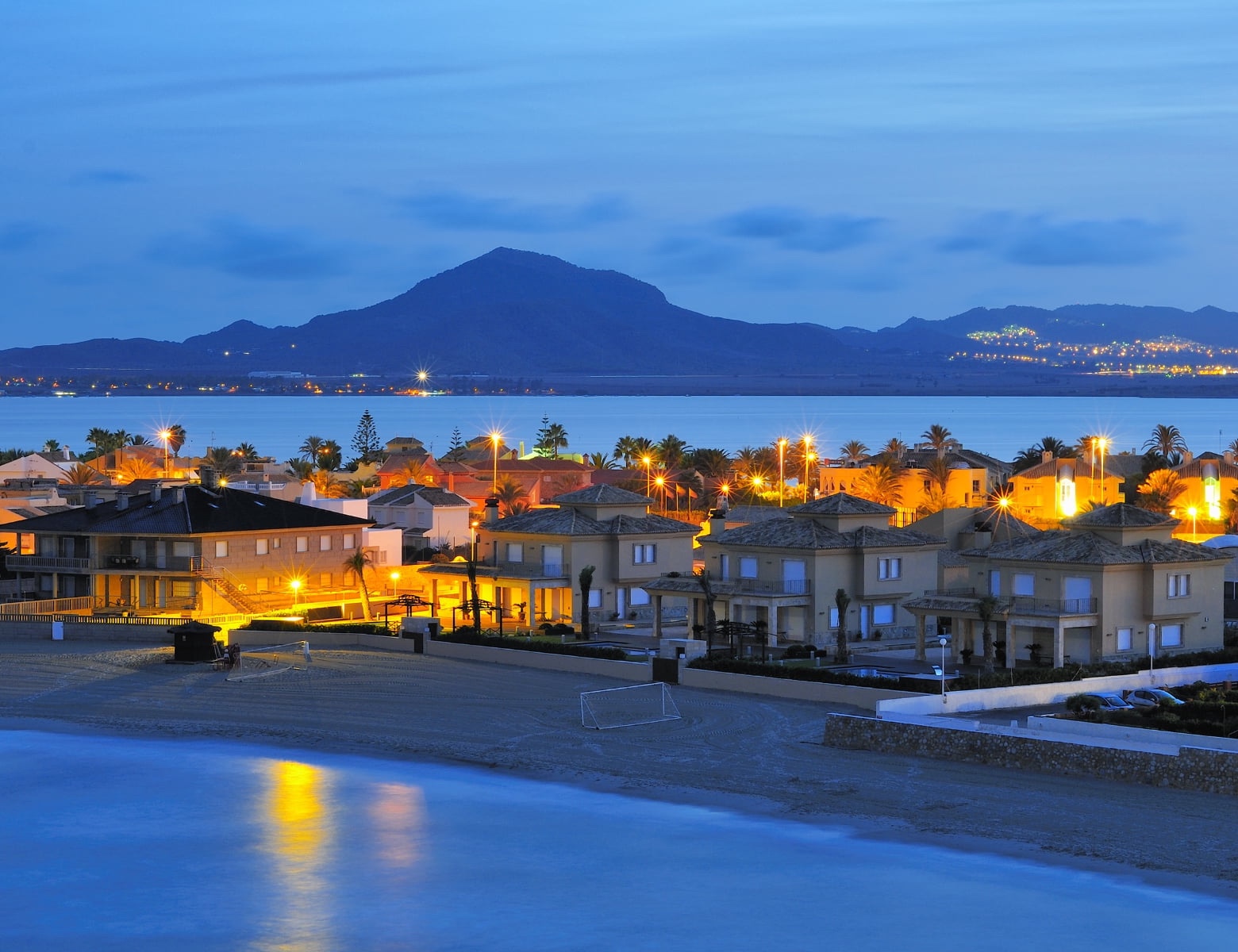
Beach
The coastline of the Costa Cálida can be divided into 2 parts; on the east side, this is almost one long stretch of beach. On the south side you will mainly find rock formations. The beaches on Mar Menor are all sandy beaches, with no tides, large waves and currents. The beach runs so slowly that the first 50 meters from the beach the depth is only 1-1.5 meters. Mar Menor is therefore very suitable for children, the elderly and the disabled. The beaches are guarded by lifeguards in high season. There is also equipment for the disabled, so that they can also enjoy the wonderful water.
Water
The Costa Cálida has a special phenomenon by Spanish standards; You can choose to swim in the Azure Mediterranean, or in the crystal clear Mar Menor. Mar Menor is 170 km², with a total coastline of 70 km. The temperature of Mar Menor is always 4 to 5 degrees higher than the Mediterranean, because it is only 7 meters deep and encapsulated. Mar Menor is excellent for many types of water sports for the above reasons.
Sights
Cartagena was founded in the 3rd century BC by Hasdrubal the Fair. During this period 5 fortresses were built on the mountain tops around the city. 4 of these fortresses have been restored, and 1 has been left in its original state. One of Spain's oldest buildings. The Amphitheater in Cartagena, was discovered in 1987. The centerpiece of the city is the beautiful Plaza Espana, a park located on a large roundabout. In the city of Murcia you will find the Trapería, a historic street that ends in the Cathedral, the construction of which has taken more than 500 years. The University of Murcia is an old monastery with marble columns. Right next to Murcia is the Santuario de la Fuensanta; a sanctuary surrounded by lemon groves. For unspoilt bays and beaches, the best is Mazarrón, a port city that has grown through the mineral-rich mountain areas. Many bays have a gravel beach, making the water squat heroes; ideal for snorkeling or diving. 90 shipwrecks can be found along the entire coastline of the Costa Cálida, most of them off the coast of Cartagena.
Uniqueness Costa Cálida
Because this part of Spain has not yet been flooded by tourism, house prices are lower than on the other Costa’s. Apart from the house prices, the prices in cafés and restaurants are not as high as on the more famous Costa’s. There is also a high-rise ban on the entire coastal region with the exception of La Manga, a thin strip of land that separates Mar Menor from the Mediterranean. For those who love golf, the province of Murcia is a paradise, with 13 golf resorts.
Celebrate
It is clear that Spaniards love to party. There are numerous small parties throughout the year, but the highlight of this is in the summer. A tradition at Spanish festivities is that they always end with a fireworks show. The largest regional festival is the Carthagineses y Romanos festival in Cartagena, which takes the last 2 weeks of September each year. During these 2 weeks, the name of the city is renamed Carthage. Thousands of Cartagenians travel through the city in Roman costumes every evening.
Facilities
The basic needs are covered in every village; there is always a supermarket, bar, restaurant and pharmacy nearby. There are 3 large shopping centers in San Javier, Cartagena and La Zenia. Larger shopping cities in the region are Cartagena, San Javier and Mazarron.
Time difference
There is no time difference with the Netherlands.
Language
The official language is Spanish. However, you can go almost everywhere with English and / or German. Border formalities, a valid passport or proof of identity.
Temperature
The average temperature in winter is approximately 16 ° C. The average temperature in spring and autumn is around 20 ° C. In the summer the average temperature is around 31 ° C.
